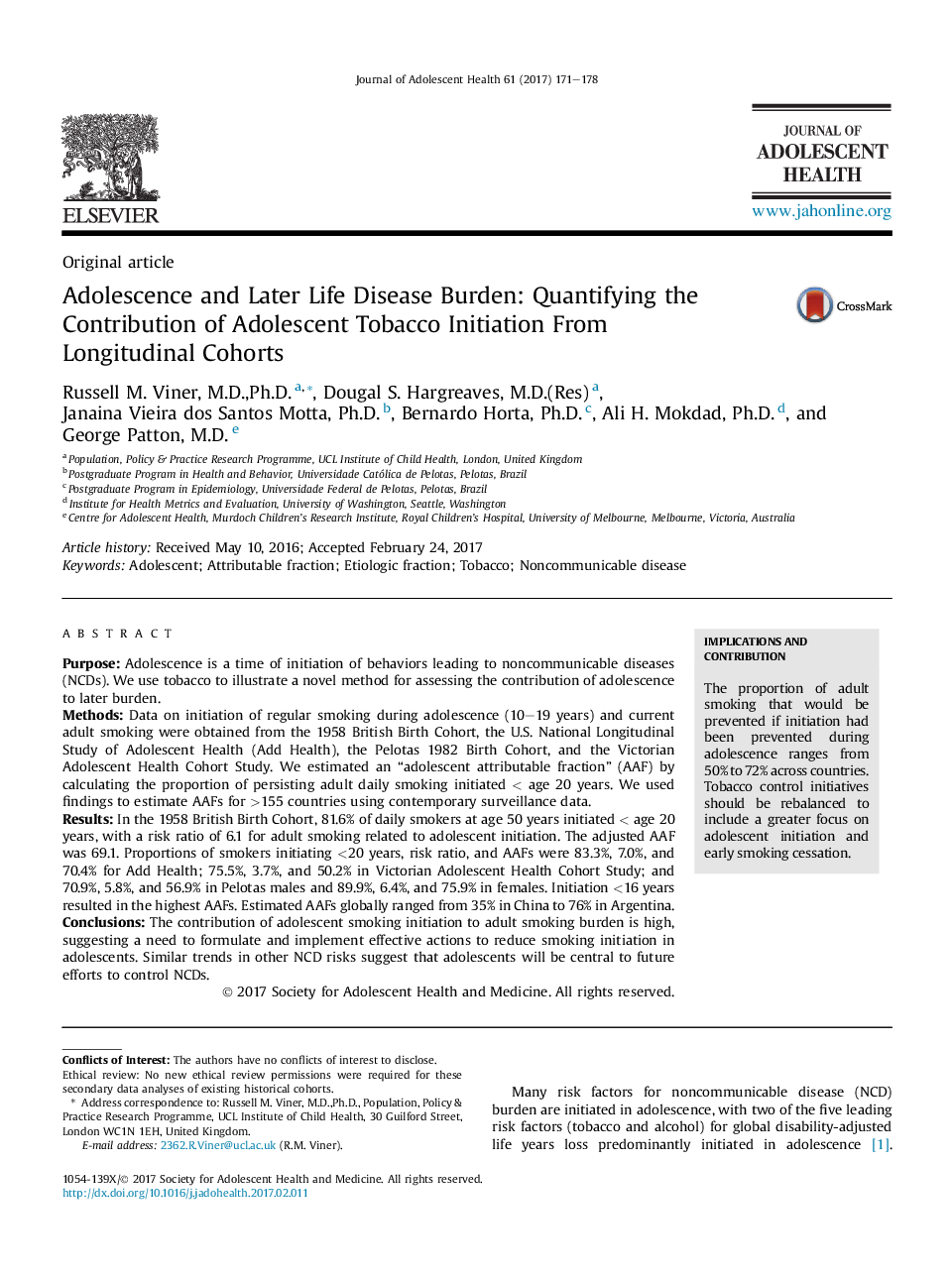| کد مقاله | کد نشریه | سال انتشار | مقاله انگلیسی | نسخه تمام متن |
|---|---|---|---|---|
| 5121217 | 1378291 | 2017 | 8 صفحه PDF | دانلود رایگان |
PurposeAdolescence is a time of initiation of behaviors leading to noncommunicable diseases (NCDs). We use tobacco to illustrate a novel method for assessing the contribution of adolescence to later burden.MethodsData on initiation of regular smoking during adolescence (10-19Â years) and current adult smoking were obtained from the 1958 British Birth Cohort, the U.S. National Longitudinal Study of Adolescent Health (Add Health), the Pelotas 1982 Birth Cohort, and the Victorian Adolescent Health Cohort Study. We estimated an “adolescent attributable fraction” (AAF) by calculating the proportion of persisting adult daily smoking initiated < age 20 years. We used findings to estimate AAFs for >155 countries using contemporary surveillance data.ResultsIn the 1958 British Birth Cohort, 81.6% of daily smokers at age 50Â years initiated < age 20 years, with a risk ratio of 6.1 for adult smoking related to adolescent initiation. The adjusted AAF was 69.1. Proportions of smokers initiating <20Â years, risk ratio, and AAFs were 83.3%, 7.0%, and 70.4% for Add Health; 75.5%, 3.7%, and 50.2% in Victorian Adolescent Health Cohort Study; and 70.9%, 5.8%, and 56.9% in Pelotas males and 89.9%, 6.4%, and 75.9% in females. Initiation <16Â years resulted in the highest AAFs. Estimated AAFs globally ranged from 35% in China to 76% in Argentina.ConclusionsThe contribution of adolescent smoking initiation to adult smoking burden is high, suggesting a need to formulate and implement effective actions to reduce smoking initiation in adolescents. Similar trends in other NCD risks suggest that adolescents will be central to future efforts to control NCDs.
Journal: Journal of Adolescent Health - Volume 61, Issue 2, August 2017, Pages 171-178
